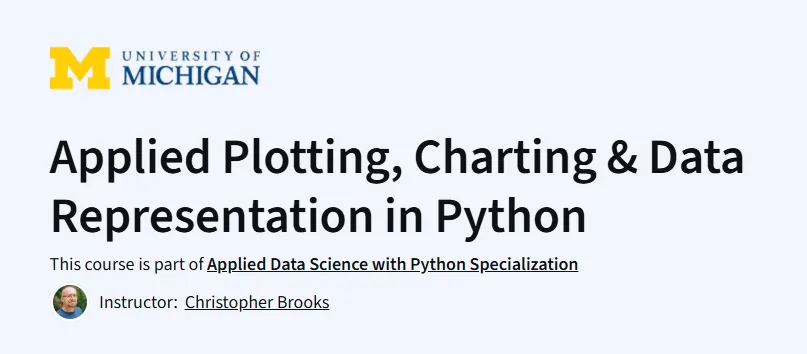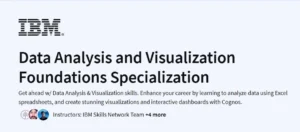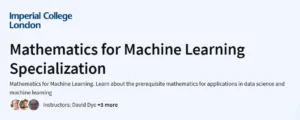What will you learn in Applied Plotting, Charting & Data Representation in Python Course
Understand the principles of effective data visualization—what makes a chart clear or misleading and the heuristics behind visualization design.
Gain hands‑on experience creating charts using Matplotlib, including line plots, scatterplots, bar charts, and overlays.
Explore advanced plotting techniques: histograms, boxplots, heatmaps, subplots, animations, and interactive visualizations
Learn to use Seaborn and Pandas for statistical plotting and clean styling aligned with best practice principles.
Program Overview
Module 1: Principles of Information Visualization
Duration: ~3 hours
Topics: Visualization design principles (Tufte’s data-ink ratio, Cairo’s visualization wheel, truthful charts)
Hands-on: Peer-reviewed exercise critiquing misleading visualizations
Module 2: Basic Charting
Duration: ~7 hours
Topics: Working with real-world CSV data, creating line charts and overlay scatter plots using Matplotlib
Hands-on: Plot weather records and overlay recent outliers for visual comparison
Module 3: Charting Fundamentals (Advanced)
Duration: ~8 hours
Topics: Use of subplots, histograms, boxplots, heatmaps, and animations or interactive elements
Hands-on: Build custom visualizations exploring design and interaction possibilities
Module 4: Applied Visualizations
Duration: ~4 hours
Topics: Applied Seaborn and Pandas plotting, choosing correct charts for storytelling
Hands-on: Final capstone: develop a visualization answering a self-defined question using at least two datasets
Get certificate
Job Outlook
Strong demand for Python visualization skills across data science, analytics, business intelligence, and reporting fields
Presentation-ready charting is valued in industries like finance, healthcare, marketing, and tech
Roles ranging from Data Analyst to BI Developer earn between $65K–$125K+; visualization expertise boosts employability
Visual storytelling skills are increasingly sought after for freelance analytics and dashboard reporting opportunities
Specification: Applied Plotting, Charting & Data Representation in Python
|
FAQs
- Basic Python and Pandas knowledge is recommended.
- Focuses on visual storytelling rather than programming fundamentals.
- Introduces Matplotlib and Seaborn for hands-on charting.
- Includes exercises using real-world datasets like CSV files.
- Ideal for learners who want to elevate their data visualization skills.
- Covers line plots, scatterplots, bar charts, and overlays.
- Introduces advanced charts: histograms, boxplots, heatmaps, and subplots.
- Includes animations and interactive elements.
- Teaches design principles to avoid misleading charts.
- Prepares learners to produce presentation-ready visualizations.
- Applies to roles like Data Analyst, BI Developer, and Data Scientist.
- Develops skills to create dashboards and visual reports.
- Increases efficiency in communicating insights to stakeholders.
- Enhances employability in finance, healthcare, marketing, and tech.
- Builds critical thinking for designing meaningful visualizations.
- Total duration: approximately 22 hours.
- Four modules covering fundamentals, advanced charting, and applied visualizations.
- Self-paced format allows learners to progress flexibly.
- Hands-on exercises and a capstone project included.
- Ideal for learners seeking practical skills in data representation.
- Covers Tufte’s data-ink ratio and Cairo’s visualization wheel.
- Teaches heuristics for clear and accurate visual communication.
- Includes peer-reviewed exercises critiquing misleading charts.
- Guides learners in choosing the right chart for each dataset.
- Reinforces learning with real-world project-based exercises.





